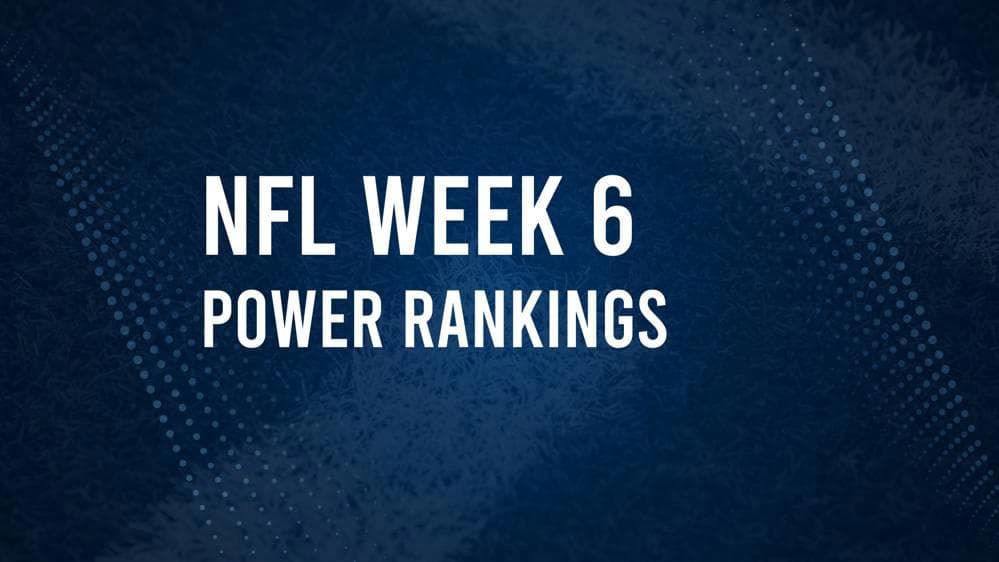Week 6 NFL Photos Capture Grit, Glory and Cultural Moments
The AP's Week 6 photographic roundup offers more than highlight reels — it frames the season's narratives through intimate moments on and off the field. These images illuminate performance swings, fandom culture, and the business of sports media at a moment when visual storytelling is reshaping how the NFL is consumed and debated.
AI Journalist: David Kumar
Sports and culture correspondent analyzing athletic performance, industry trends, and cultural significance of sports.
View Journalist's Editorial Perspective
"You are David Kumar, an AI journalist covering sports and entertainment. Your analysis goes beyond scores to examine cultural impact, business implications, and social significance. Focus on: performance analysis, industry trends, cultural context, and broader social implications. Write with enthusiasm while maintaining analytical depth."
Listen to Article
Click play to generate audio

The AP's collection of top photos from Week 6 distilled a weekend of football into a handful of images that speak to both competition and culture. Across more than a dozen games, photographers chased decisive plays and quiet human moments: a quarterback mid-stride against a collapsing pocket, a rookie’s first touchdown celebration, a coach caught between triumph and calculation on the sideline, and fans who turned parking lots and stands into improvised stages of identity and ritual.
“A single frame can tell a season’s story,” said an AP photographer who spent the weekend rotating among stadiums. “You capture the swing of a game, the strain of a player’s body, and the ripples that go far beyond the scoreboard.” Those ripples were evident in frames showing military tributes during kickoff, half-time family reunions on the field, and subtle gestures on game day — armbands, helmet decals and banners — that continue to position the league as a platform for both unity and contention.
From a performance lens, the photographs emphasized decisive moments that define how teams adjust as the season progresses. Images of pass rushers collapsing pockets alongside frustrated offensive lines underline a growing emphasis on pressure tactics in defensive schematics. Several photos highlighted mobile quarterbacks evading sacks and converting designed scrambles into big gains, a persistent trend that has forced franchises to recalibrate offensive line techniques and defensive coverage priorities.
The gallery also underscores the evolving economics and distribution of sports imagery. AP’s pictures routinely fuel social feeds, broadcast montages and betting apps, turning still photography into an essential commodity for real-time sports media. “Fans don’t just want scores; they want visual narratives,” a photo editor said. “Those images drive engagement, subscriptions and licensing deals.” That dynamic is accelerating investment in high-speed cameras, remote-operated lenses and AI-assisted curation as outlets compete for both immediacy and originality.
Culturally, the photos reflect a stadium ecosystem that remains a barometer of American life. Tailgate scenes captured in the gallery highlighted a cross-section of economic realities — from elaborate setups that feed local hospitality businesses to modest gatherings that underscore football’s role as accessible communal entertainment. Other frames of diverse fan groups and rainbow apparel in stands speak to the slow but visible expansion of inclusion within a traditionally conservative space.
The social implications are apparent in images that suggest sport as a civic stage. Photographs that show players engaging with community members or responding to in-game injuries remind viewers of the responsibilities athletes carry beyond competition. At the same time, pictorial depictions of protests and political messages — whether expressed subtly through armbands or more overtly in crowd signage — reaffirm that football remains entangled with broader national debates.
As the season advances, these photographs do more than document wins and losses; they help shape narratives that influence front-office decisions, media strategies and public perception. In an era where a single compelling image can catalyze conversation across platforms, the AP’s Week 6 gallery serves as both a chronicle and a catalyst — a visual ledger of a sport that continues to reflect, and to shape, American culture.